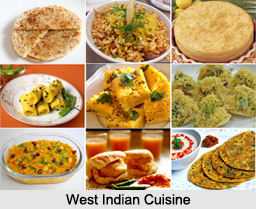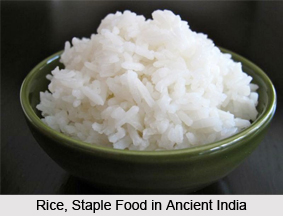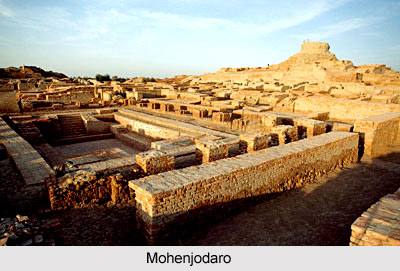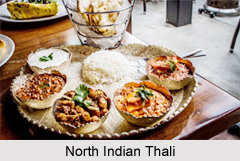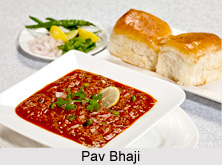 Pav Bhaji is a fast food dish from Maharashtra. It consists of a vegetable curry served with a soft bread roll. Mumbai street foods are popular across India and Pav Bhaji is one of them. It is one of Mumbai"s hottest selling fast food and street food. Across all streets and corners of Mumbai one can find numerous pav bhaji stalls. There are some stall and vendors who sell these delicious pav bhaji during the wee hours of night. Most of the people in Mumbai also eat pav bhaji as meals during lunch or dinner. As pav bhaji tends to be a heavy snack. Pav Bhaji is more than a mere snack.
Pav Bhaji is a fast food dish from Maharashtra. It consists of a vegetable curry served with a soft bread roll. Mumbai street foods are popular across India and Pav Bhaji is one of them. It is one of Mumbai"s hottest selling fast food and street food. Across all streets and corners of Mumbai one can find numerous pav bhaji stalls. There are some stall and vendors who sell these delicious pav bhaji during the wee hours of night. Most of the people in Mumbai also eat pav bhaji as meals during lunch or dinner. As pav bhaji tends to be a heavy snack. Pav Bhaji is more than a mere snack.
History of Pav Bhaji
Pav Bhaji originated in the 1850s as a fast lunchtime dish for textile mill workers in Mumbai. Pav Bhaji was later served at Udupi restaurants throughout the city. Pav Bhaji is now served at outlets from simple hand carts to formal restaurants in India.
Types of Pav Bhaji
Variations on Pav Bhaji include:
•Cheese Pav Bhaji, with cheese on top of the bhaji
•Fried Pav Bhaji, with the pav tossed in the bhaji
•Paneer Pav Bhaji, with paneer cheese in the bhaji
•Mushroom Pav Bhaji, with mushrooms in the bhaji
•Khada Pav Bhaji, with vegetable chunks in the bhaji
•Jain Pav Bhaji, without onions and garlic and with plantains instead of potatoes
•Kolhapuri Pav Bhaji, using a spice mix common in Kolhapur
•Kathiawadi Pav Bhaji with buttermilk, a variant from the Kathiawad peninsula
•Dry fruit Pav Bhaji with dried fruits in or on the bhaji
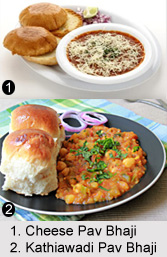 Preparation of Pav Bhaji
Preparation of Pav Bhaji
Pav Bhaji has many variations in ingredients and garnishes, but is essentially a spiced mixture of mashed vegetables in a thick gravy cooked on a flat griddle served hot with a buttered soft white bread roll.
Ingredients:
•2 medium onions chopped
•1 ½ cups chopped cauliflower
•2 boiled potatoes mashed
•Â¾ cup capsicum chopped small
•Â¼ cup green peas
•1 green chilli
•Â½ tsp red chilli powder
•Â¼ tsp turmeric powder
•1 ½ tbsp pav bhaji masala powder
•1 ½tsp ginger-garlic paste
•3 medium tomatoes chopped small
•Lemon juice
•Chopped onions for garnish
•Coriander leaves for garnish
•1 tbsp butter for bhaji
•Additional butter for pav
•Pav 6 to 8
•Salt as per taste
Method:
1. Add butter or oil to a pan and heat up. Add onions and fry till they turn translucent, add ginger-garlic paste and fry till it gets fragrant.
2. Add tomatoes, turmeric and sprinkle salt, fry till tomatoes turn soft and mushy.
3. Add capsicum, cauliflower, potatoes and green peas, fry for 2 minutes.
4. Add chilli powder, salt and masala powder. Mix and fry for another 2 minutes.
5. Pour water just enough to cover the vegetables. Cook till the vegetables are soft cooked.
6. Add coriander leaves mix well and mash the curry.
7. Cook till the bhaji becomes thick.
8. Slit the pav buns horizontally leaving one edge intact
9. Heat butter on a pan. Open the buns and toast it.
10. Garnish with onions, butter and serve hot.
